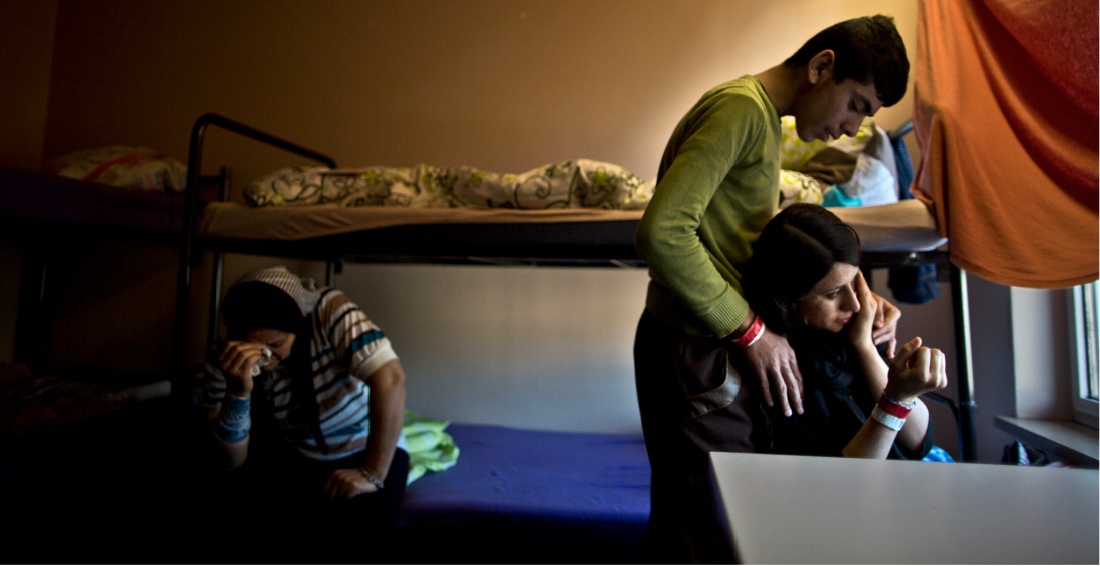Iraqi Refugees

A refugee from Iraq is comforted by her brother, 2015. (AP Photo/Muhammed Muheisen)
As of March 2023, more than 1.1 million Iraqis remain displaced.
After the 2003 U.S. invasion and again during the heightened violence brought on by Islamic State terror attacks, especially between 2014-2017, millions of Iraqis were displaced. Engineers, artists, lawyers, academics, doctors, and other professionals were among the first to escape the war. This migration had a negative impact on Iraq's healthcare system, dismantled many of Iraq's cultural institutions and stripped Iraq of many services.
According to the Iraqi Medical Association, approximately half of Iraq's registered doctors fled the country in the years immediately following the 2003 invasion. Where once Iraq had among the region’s best health care system and health indicators, the current patient-doctor ratio puts it significantly behind neighboring countries.
Meanwhile, crucial health indicators in Iraq have worsened since the U.S. invasion, and even before that, since the 1990s, when the U.S. imposed economic sanctions that were devastating for the Iraqi people. The infant mortality rate increased 150 percent from 1990 to 2005. The World Health Organization estimated that 70 percent of Iraqis lack access to clean water and 80 percent lack sanitation, conditions leading to cholera epidemics. The lack of clean water and sanitation are particular concerns among Iraqi internally displaced persons (IDPs), many of whom live in informal settlements.
Key Findings
-
The 2003 U.S. invasion displaced approximately 1 in 25 Iraqis from their homes, and fighting connected with the Islamic State, especially after 2014, contributed to additional displacement.
- As of March 2023, 1.1 million Iraqis are still internally displaced or refugees abroad.
-
The war has brought increased rates of illness to Iraq, while displacing the medical professionals who could have treated the sick.
- The U.S. wars in Iraq and Syria are expected to cost $2.89 trillion by 2050.
Recommendations
- The Congressional Research Service should submit an annual report to Congress on the refugee situation in regions where the U.S. is at war, analyzing the problem’s scale and the U.S. and international resources directed towards it.
(Page updated as of March 2023)

